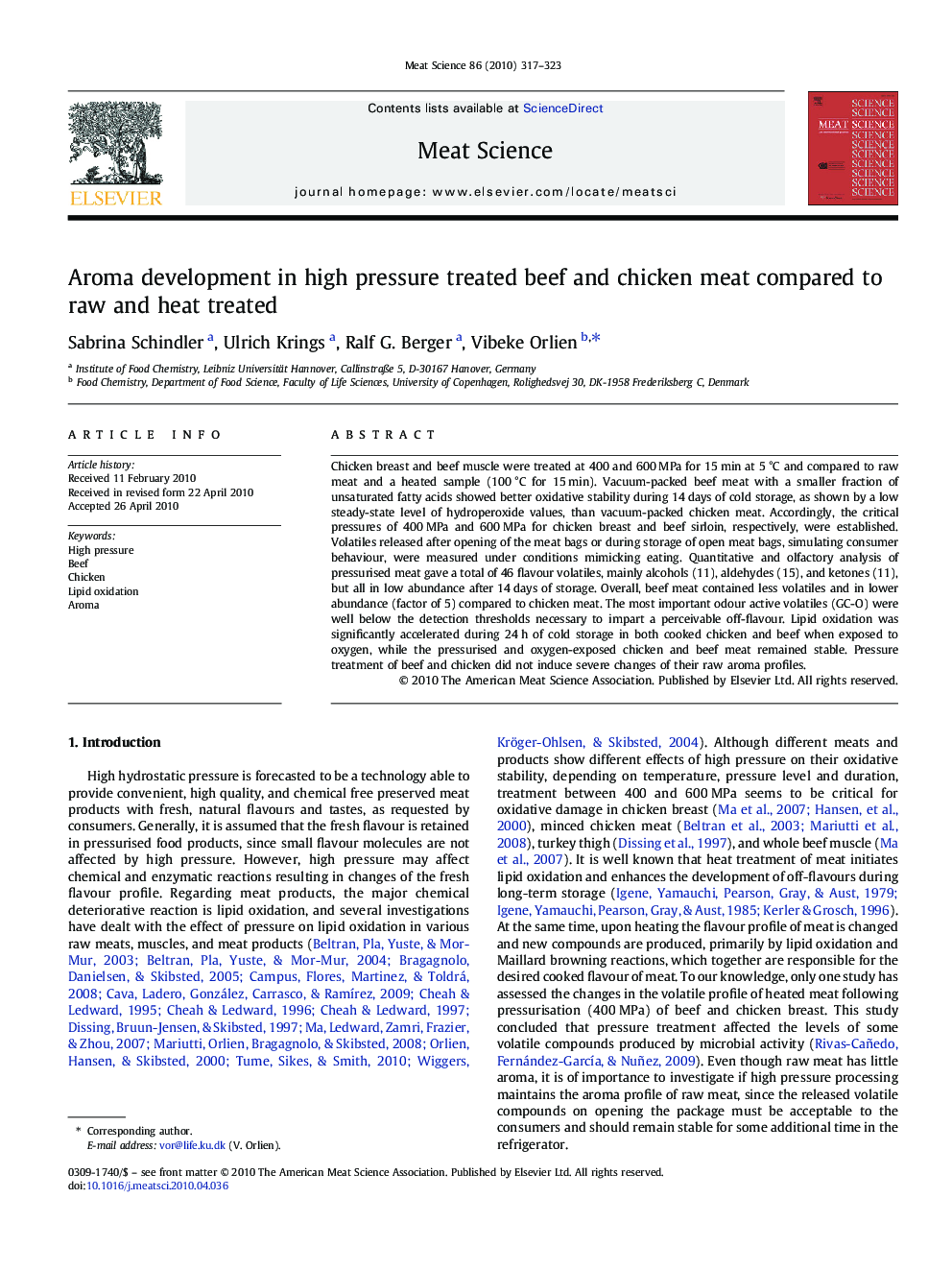| Article ID | Journal | Published Year | Pages | File Type |
|---|---|---|---|---|
| 2450281 | Meat Science | 2010 | 7 Pages |
Chicken breast and beef muscle were treated at 400 and 600 MPa for 15 min at 5 °C and compared to raw meat and a heated sample (100 °C for 15 min). Vacuum-packed beef meat with a smaller fraction of unsaturated fatty acids showed better oxidative stability during 14 days of cold storage, as shown by a low steady-state level of hydroperoxide values, than vacuum-packed chicken meat. Accordingly, the critical pressures of 400 MPa and 600 MPa for chicken breast and beef sirloin, respectively, were established. Volatiles released after opening of the meat bags or during storage of open meat bags, simulating consumer behaviour, were measured under conditions mimicking eating. Quantitative and olfactory analysis of pressurised meat gave a total of 46 flavour volatiles, mainly alcohols (11), aldehydes (15), and ketones (11), but all in low abundance after 14 days of storage. Overall, beef meat contained less volatiles and in lower abundance (factor of 5) compared to chicken meat. The most important odour active volatiles (GC-O) were well below the detection thresholds necessary to impart a perceivable off-flavour. Lipid oxidation was significantly accelerated during 24 h of cold storage in both cooked chicken and beef when exposed to oxygen, while the pressurised and oxygen-exposed chicken and beef meat remained stable. Pressure treatment of beef and chicken did not induce severe changes of their raw aroma profiles.
